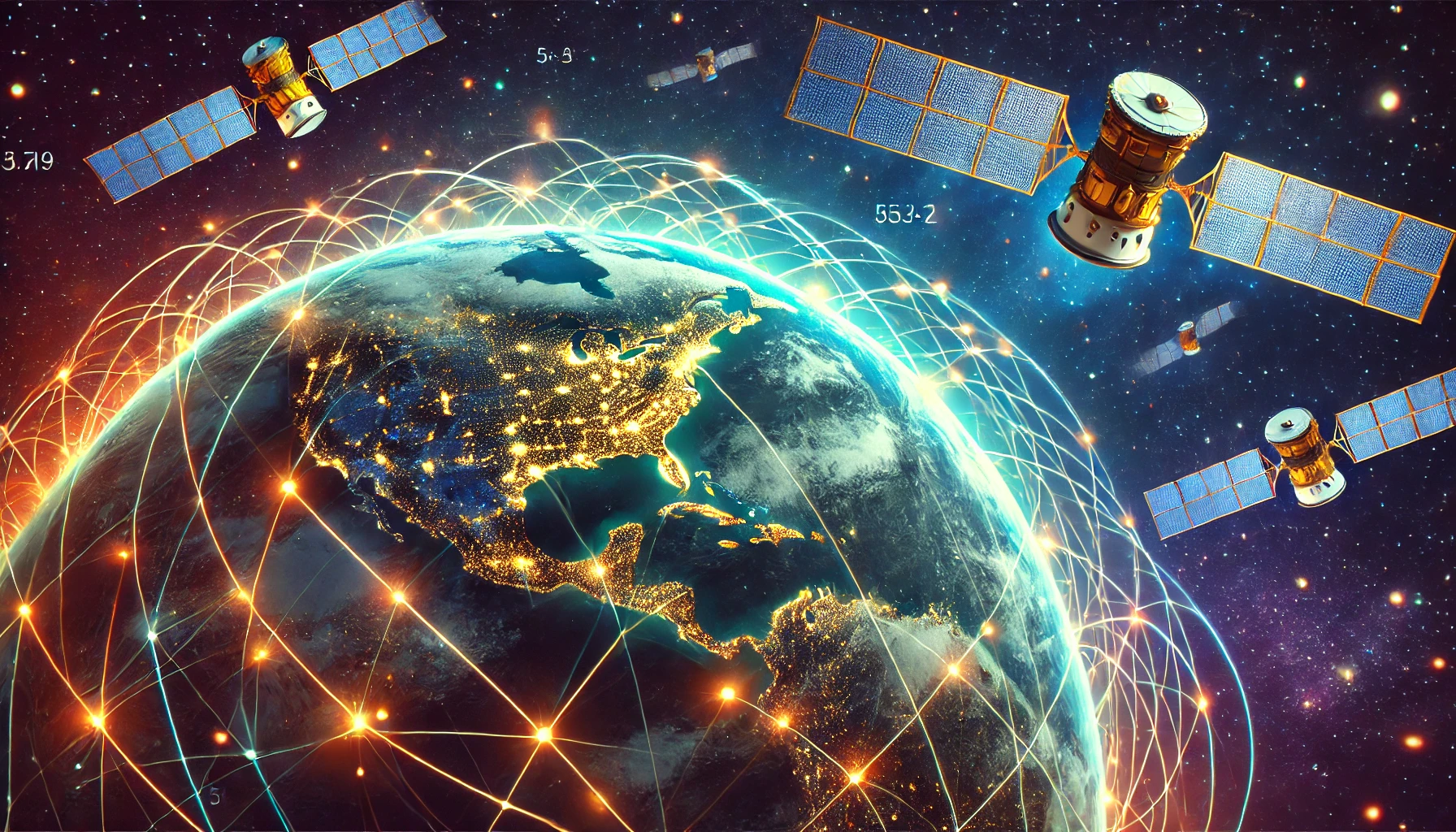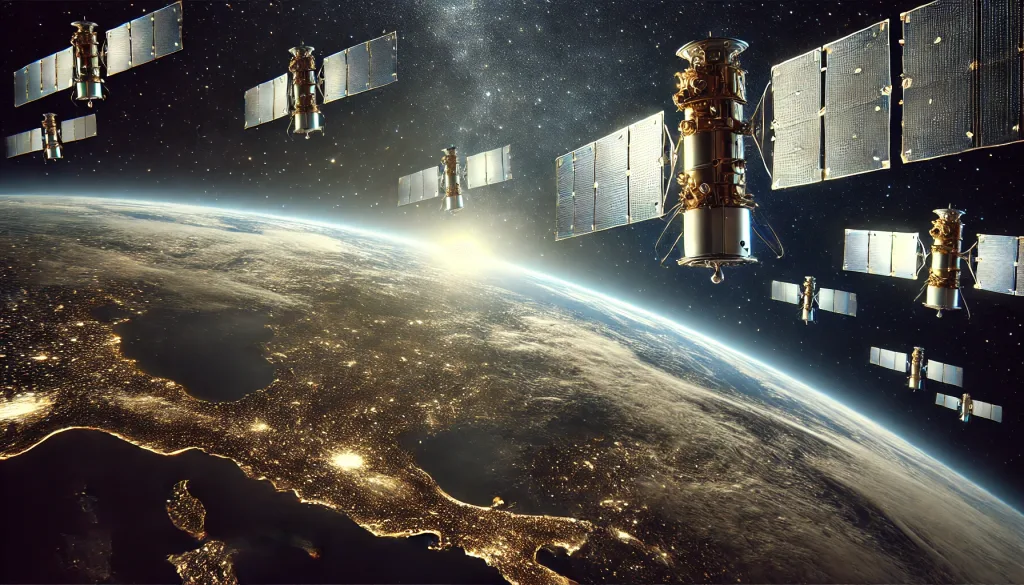
Technological Giants Invest in Satellite Internet: Revolutionizing Broadband with Low Earth Orbit Satellites
In recent years, technological giants have turned their attention towards satellite internet as a way to provide broadband access to remote areas and underserved regions. The launch of low Earth orbit (LEO) satellites, in particular, has garnered significant attention due to their potential to change the way people around the world connect to the internet. With major players like SpaceX, Amazon, and OneWeb investing heavily in satellite constellations, the future of broadband connectivity looks promising. This article explores how LEO satellites are set to revolutionise internet access and the role that big tech companies are playing in this transformation.
The Rise of Low Earth Orbit Satellites
The development of low Earth orbit satellites marks a significant evolution in the field of global telecommunications. Unlike traditional geostationary satellites that are placed thousands of kilometres above the Earth, LEO satellites operate much closer to the surface, enabling faster data transmission and reduced latency. This technology is unlocking opportunities in regions that have long been overlooked by traditional broadband providers.
One of the key reasons for the growing popularity of LEO satellites is their ability to provide seamless coverage across vast areas. Traditional infrastructure like fibre-optic cables and cellular towers often require substantial investments and maintenance. By contrast, LEO satellites bypass these challenges, offering a scalable solution that can be deployed rapidly. Moreover, as global demand for internet connectivity increases, the flexibility of LEO networks makes them a critical tool in meeting this demand.
LEO satellites also contribute to innovation in industries such as agriculture, logistics, and environmental monitoring. For example, farmers in remote regions can use satellite connectivity to access real-time weather data and precision farming technologies. Logistics companies can enhance their supply chain management by tracking shipments in areas without cellular coverage. These applications demonstrate how LEO satellites are not just about internet access but are also enablers of broader technological advancements.
What Are LEO Satellites and How Do They Work?
Low Earth orbit satellites are positioned much closer to the Earth’s surface compared to traditional geostationary satellites, typically orbiting at altitudes between 300 and 2,000 kilometres. This proximity allows LEO satellites to provide much faster internet speeds with lower latency compared to their higher-orbit counterparts. The key difference is that LEO satellites circle the Earth in smaller, faster orbits, enabling frequent coverage of any given location and making them ideal for providing constant, reliable internet access.
LEO satellite constellations consist of hundreds or even thousands of small satellites working together to deliver coverage across vast areas of the planet. Unlike traditional terrestrial infrastructure, which requires extensive groundwork and maintenance, these satellites can be launched and deployed relatively quickly. This scalability is particularly valuable for remote or rural areas where building physical broadband networks is neither feasible nor cost-effective.
How Big Tech Is Shaping the Future of Satellite Internet
Leading technology companies are investing billions of dollars into LEO satellite networks, driven by the promise of bridging the digital divide and capturing a share of the emerging satellite broadband market. The involvement of these industry giants underscores the transformative potential of this technology, which is reshaping the global communications landscape.
SpaceX’s Starlink is perhaps the most visible example of this trend. With a constellation of over 5,000 satellites in orbit and plans to launch thousands more, Starlink has already begun offering services in dozens of countries. The company’s vision extends beyond individual users to include enterprise customers, maritime and aviation industries, and even military applications. This broad target market highlights the versatility of satellite internet.
Amazon’s Project Kuiper, though still in its early stages, has generated significant interest. The e-commerce giant’s entry into the satellite internet market is expected to disrupt the competitive landscape further, leveraging its extensive global presence and technological expertise. Similarly, OneWeb has made strides in deploying its satellite network, focusing on connecting remote regions like the Arctic and expanding its partnerships with governments and businesses worldwide.
However, the involvement of big tech in satellite internet is not without challenges. The issue of orbital congestion and space debris has become a pressing concern as more satellites are launched. Additionally, achieving cost-effective operations remains a key hurdle. Despite these challenges, the continued investment and innovation in this sector indicate a bright future for LEO satellite networks.
Key Players Investing in Satellite Networks
SpaceX is at the forefront with its ambitious Starlink project, which has already launched thousands of LEO satellites into orbit. Offering services in many countries, Starlink has demonstrated the potential of satellite internet to reach remote communities and provide competitive speeds.
Amazon has also entered the race with Project Kuiper, aiming to deploy over 3,200 satellites to create a global broadband network. The company’s extensive logistical and technological resources position it as a formidable competitor in this space. Another significant player, OneWeb, is focused on connecting underserved regions, particularly in the Arctic, where traditional broadband is scarce.

The Impact of LEO Satellites on Global Broadband Access
The impact of LEO satellites extends far beyond the realm of internet connectivity. By providing high-speed, low-latency broadband access to underserved regions, these networks are helping to address long-standing inequalities in access to information and opportunities. This shift has far-reaching implications for economic development, education, and healthcare.
In developing nations, the arrival of satellite internet is empowering communities by connecting them to global markets and digital resources. Small businesses are finding new customers online, while students in remote areas are accessing virtual classrooms for the first time. In healthcare, telemedicine is becoming a reality even in the most isolated locations, enabling doctors to diagnose and treat patients remotely.
LEO satellites are also playing a critical role in disaster response. When traditional networks are damaged or destroyed during natural disasters, satellite internet can provide a lifeline for emergency communications. For example, Starlink has been deployed in areas affected by hurricanes and earthquakes, offering vital connectivity to relief workers and local communities. This capability underscores the resilience and versatility of satellite networks.
Bringing Connectivity to Remote and Underserved Areas
One of the most transformative aspects of LEO satellite technology is its ability to bring high-speed internet to regions that have historically been left behind. In rural communities and developing countries, traditional broadband infrastructure often faces geographical and economic constraints. Satellite internet bypasses these barriers, making it an ideal solution for areas where connectivity has remained a challenge.
Additionally, LEO satellite networks play a critical role in disaster recovery. When natural disasters such as hurricanes, earthquakes, or floods disrupt ground-based networks, satellite internet can provide an immediate and reliable alternative. This was evident when Starlink offered emergency connectivity during the conflict in Ukraine and after hurricanes in the United States. The ability to maintain communication in such scenarios can save lives and aid in recovery efforts.
Beyond individual users, the availability of satellite internet can stimulate economic growth. Small businesses in isolated regions can leverage digital platforms to reach global markets, students can access online education, and healthcare providers can adopt telemedicine solutions. This integration into the global digital economy has profound implications for improving quality of life and reducing inequalities.
In conclusion, the investment by technological giants in low Earth orbit satellites is set to revolutionise broadband access globally. The expansion of satellite networks will bridge the digital divide, providing high-speed internet access to underserved regions and improving connectivity for millions of people around the world. As LEO satellite constellations continue to grow, the future of global connectivity looks brighter than ever.
Popular articles
-
 Digital twins in 2025–2026: real city, fac...
Digital twins in 2025–2026: real city, fac...Digital twins have moved well beyond the “nice-to-have” stage. In 2025 and …
Learn more -
 Why Modern Technologies Are Becoming More ...
Why Modern Technologies Are Becoming More ...Modern technologies are developing at a pace that few users can fully …
Learn more -
 Next-Generation Home Batteries: Hybrid Ene...
Next-Generation Home Batteries: Hybrid Ene...Hybrid home batteries have become a practical foundation for residential energy autonomy …
Learn more
